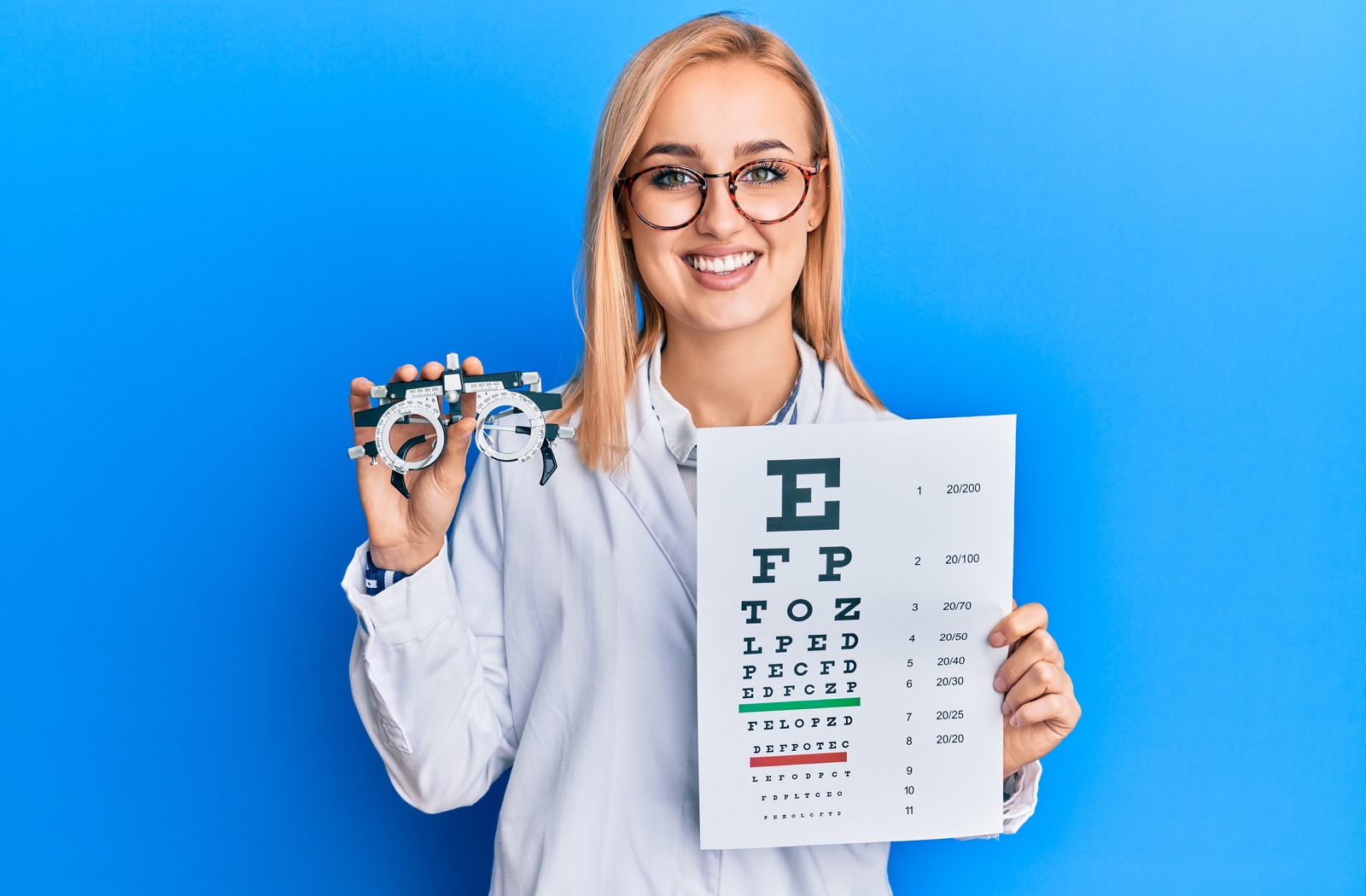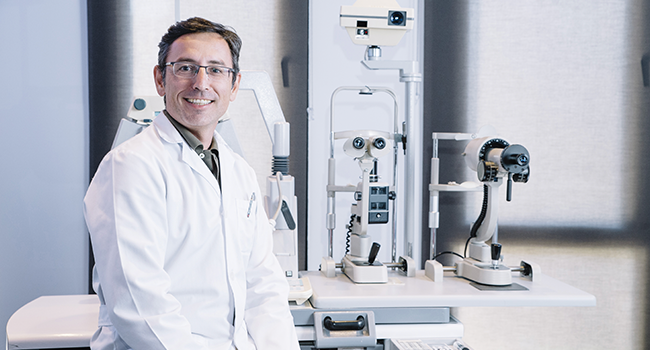Comprehending the Duty of Your Eye Doctor in Keeping Vision
Comprehending the Duty of Your Eye Doctor in Keeping Vision
Blog Article
Discovering the current Technological Improvements in Optometry and What They Mean for Optometrists
From the precision of Optical Coherence Tomography to the nuanced understandings supplied by AI-driven diagnostic tools, these innovations are setting brand-new criteria in individual assessment and treatment. As these improvements penetrate the practice, eye doctors are encountered with the obstacle of welcoming these tools to improve person end results.
Technologies in Diagnostic Equipment
Progressing the area of optometry, technologies in diagnostic tools have actually transformed the method eye care experts evaluate and identify visual disabilities and ocular problems. The past decade has witnessed significant technological advancements, enabling more comprehensive and exact assessments. Optical Comprehensibility Tomography (OCT), as an example, supplies high-resolution cross-sectional photos of the retina, permitting the early detection of conditions such as glaucoma and age-related macular deterioration. This non-invasive imaging technique has ended up being indispensable in modern optometric method.
One more trick development is the intro of innovative corneal topography systems, which map the surface area curvature of the cornea with precision. These tools are especially beneficial for fitting contact lenses and detecting corneal conditions. Electronic retinal imaging has actually changed conventional ophthalmoscopy, providing in-depth, breathtaking sights of the retina that facilitate extensive aesthetic exams.
The growth of wavefront aberrometry has also been important, allowing the evaluation of refractive mistakes with unequaled precision (Optometrist Chino). This innovation helps in customizing corrective lenses and enhancing surgical outcomes for refractive surgical treatments. Collectively, these diagnostic improvements equip eye doctors to deliver superior patient care, ensuring very early intervention and customized therapy strategies, inevitably improving aesthetic wellness end results
AI in Person Monitoring
Building on the foundation of cutting-edge diagnostic devices, the incorporation of expert system (AI) in individual monitoring represents a transformative jump for optometry. AI systems are increasingly utilized to enhance performance, accuracy, and customization in person treatment. By assessing huge quantities of information, AI can determine patterns and forecast possible ocular conditions, allowing optometrists to customize treatments better. This ability is important in handling persistent eye diseases such as glaucoma and diabetic person retinopathy, where early discovery and constant monitoring are crucial.
Furthermore, AI-driven platforms assist in structured client interactions and management processes. Automated scheduling, digital appointments, and individualized follow-up strategies not only enhance individual fulfillment but likewise maximize time monitoring for professionals. These systems can triage people based on the seriousness of their conditions, making sure that those in vital demand get punctual focus.
Furthermore, AI improves decision-making by providing optometrists with evidence-based recommendations and treatment paths. By integrating data from electronic health and wellness documents, AI devices provide insights that inform professional decisions, reducing the risk of mistakes and enhancing patient results. As AI proceeds to evolve, its role in client management will likely increase, improving the landscape of optometric care.
Advancements in Retinal Imaging
In the realm of optometry, retinal imaging has seen exceptional technical developments that are boosting analysis abilities and individual treatment. Innovations such as Optical Coherence Tomography (OCT) and fundus digital photography have actually transformed just how eye doctors visualize and assess the retina. OCT, in certain, gives high-resolution, cross-sectional pictures of the retina, permitting the detailed exam of its layers. This capacity is vital for very early detection and management of conditions like glaucoma, diabetic person retinopathy, and age-related macular degeneration.
Boosted imaging modalities like OCT angiography are more refining diagnostic precision. Eye Doctor. Such innovations help with the recognition of min retinal changes that can represent illness development.
Additionally, advancements in expert system are enhancing retinal imaging by allowing computerized evaluation of huge datasets. These systems aid optometrists in identifying patterns indicative of pathology, thus improving diagnostic accuracy and efficiency. my site Jointly, these developments are changing retinal imaging right into a cornerstone of modern eye care, boosting outcomes and expanding therapeutic possibilities.
Teleoptometry's Growing Function
Teleoptometry is significantly coming to be a crucial element of eye care, driven by improvements in electronic communication and analysis devices. This is particularly advantageous in rural and underserved locations where accessibility to specialized eye care is frequently restricted.
The assimilation of fabricated intelligence (AI) additional improves teleoptometry, enabling the evaluation of visual information and assisting in the detection of eye conditions such as glaucoma and diabetic retinopathy. AI-powered formulas can swiftly translate complex imaging data, providing eye doctors with important understandings that reinforce medical decision-making.
Furthermore, teleoptometry sustains connection of treatment with seamless integration with digital health documents (EHRs), permitting optometrists to preserve thorough client backgrounds. When consulting with various professionals., this ensures that people receive constant and customized care also.
Regardless of these benefits, obstacles continue to be, including making sure data try this web-site protection and taking care of person assumptions. Teleoptometry stands for a considerable stride in the direction of even more obtainable, effective, and patient-centered eye treatment. As technology progresses, its role is poised to expand further.

Future Fads in Eye Treatment
A myriad of innovative trends is readied to improve the future of eye care, driven by technical improvements and the developing requirements of people. One considerable trend is the combination of expert system (AI) in diagnostics, which assures to enhance the accuracy and performance of eye evaluations. AI algorithms can examine substantial quantities of data from retinal photos, possibly spotting conditions like diabetic retinopathy and glaucoma earlier than conventional methods.
Moreover, tailored medication is acquiring grip in optometry, with hereditary screening informing personalized treatment plans. This strategy intends to optimize client results by tailoring interventions to specific hereditary accounts. Wearable modern technology, such as smart call lenses, is likewise imminent, supplying real-time tracking of intraocular stress or sugar degrees, thus providing continuous understandings into systemic and ocular wellness.
The fostering of augmented fact (AR) and virtual truth (VIRTUAL REALITY) in training and patient education is an additional emerging fad. These innovations supply immersive experiences that can enhance understanding and skills both for optometrists and clients. As these trends progress, eye doctors should stay abreast of technological advancements to supply cutting-edge care, making certain improved individual results and contentment in the dynamic landscape of eye care.
Final Thought

Collectively, these diagnostic developments empower Get More Information eye doctors to provide exceptional person treatment, making sure early intervention and tailored therapy methods, ultimately boosting aesthetic wellness results.

As these technologies proceed to progress, eye doctors must adapt and include them right into method, eventually maximizing workflow effectiveness and raising the standard of eye care provided to people.
Report this page